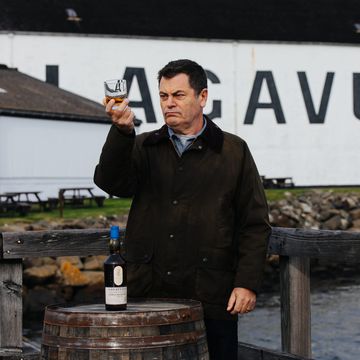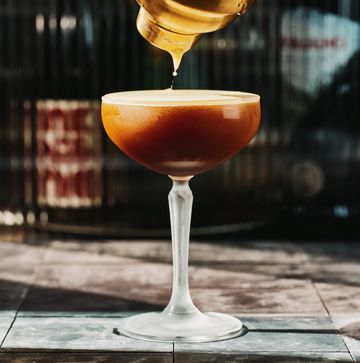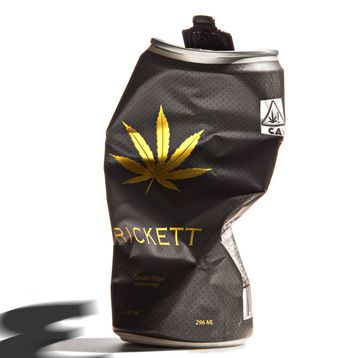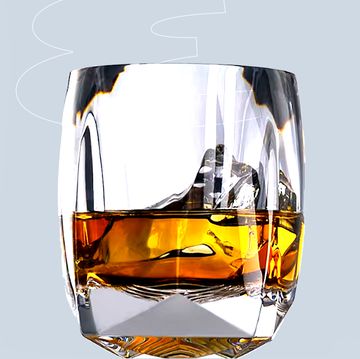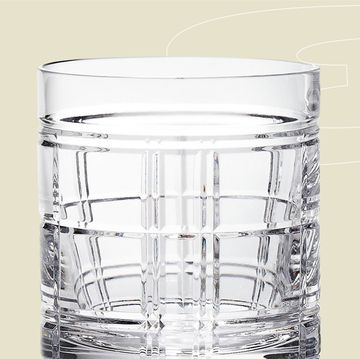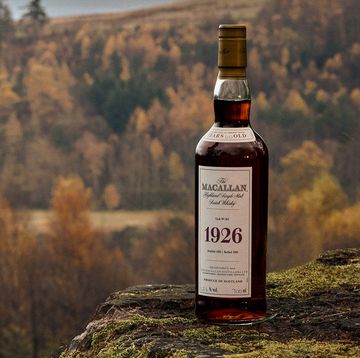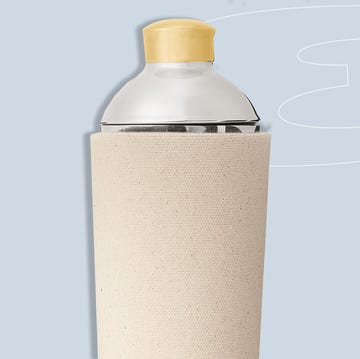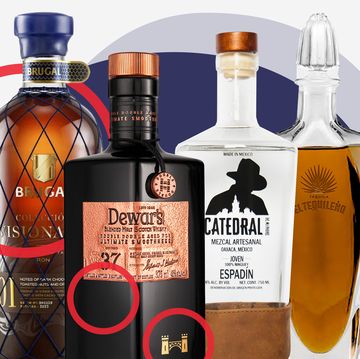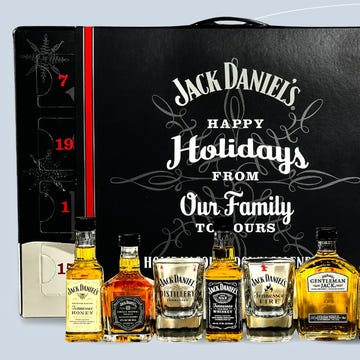After ruling out astronaut and pro-baseball player as viable career options, most men, at one time or another, dream of working at a brewery. After just visiting the good people at Allagash, I can report that it's everything you hoped it'd be: bearded, jumpsuit-clad guys toting around giant wrenches, breathing in the sour-sweet fumes of brewing suds; AC/DC blasting from an old radio over the growl of pumps and engines; beer flowing like water. Add a few Victoria's-Secret-models-turned-bottling-technicians and the fantasy would be complete. Everyone I saw was under the age of 40, or maybe they just looked that way. Maybe that's how you'd look, too, if you had a job like this.
If you're not familiar with Allagash, you should be. The Portland, Maine-based operation is one of the most highly regarded craft breweries in the U.S., a premier producer of Belgian-style beer stateside. Eighteen years in, Allagash operates with a staff of just 33 lucky individuals. These days, business is so good that they brew 24 hours a day and still can't always keep up with demand.
Meet Jason Perkins, brewmaster, unapologetic beer nerd, and resident Allagash cruise director. Perkins has forgotten more about yeast and malt than most people will ever know. We sat down over a couple of Allagash Whites to talk about home-brewing, what it takes to become a brewmaster, and something called the Coolship Project. You really want to hear about that last one.
ESQUIRE: For the beer novices out there, let's get some basics out of the way. What does it mean when you say "Belgian-style"? What makes a beer Belgian-style?
JASON PERKINS: The real driver of Belgian-style flavors has to do with the particular yeast strains. So for IPAs the big driver is hops. Hops are important to us, but the real differentiating factor is the selection of a yeast strain. Yeast is what we as brewers worship. It's what makes beer. It takes sugary liquid and converts it to alcohol, CO2, and flavor compounds. If you can control those flavor compounds, you get interesting, great-tasting beers. So for instance, if you try a Belgian Tripel, that's a great example of a beer that's really simple in its ingredient list but that has a tremendous range of flavors, and that's due to the yeast byproducts.
ESQ: A lot of Belgian beers, especially the fancier ones, are sold in the 750-ml bottles with corks. What's with that? Is it just a marketing thing?
JP: That's a traditional package for a Belgian beer, because we shoot for a much higher carbonation level. Everything we sell gets bottled flat and the sugar and yeast we add creates a second fermentation, a small one, in the bottle. We have to aim for a lower carbonation level in the 12-oz bottles because the bottles aren't heavy enough, so they can explode. With 750-ml bottles we can get almost twice the volume of carbonation because the bottles are heavier and we have the cork and cage.
ESQ: Let's talk about your job. I think most men would rank being a brewmaster up there with being a video-game tester as one of the greatest jobs of all time. How did you become a brewmaster?
JP: I started home-brewing when I was in college and after college, and just really fell in love with the process, then worked hard to get into a brewing setting. I started working at a small brewery scrubbing floors and working the bottling line and that got my foot in the door, and I loved it right away. I've been getting paid to make beer for 15 years now. It's a different path for everybody, but for me it was a lot of on-the-job training, a lot of reading, and a couple of professional courses, and growing with this company. I've been here for 13 years, and when I started there was only one other full-time employee. I grew into the brewmaster role. I've had a lot of long days covered in grain and yeast and water.
ESQ: It must be cool to have such a creative role in coming up with new beers. What are you working on that you're most excited about right now?
JP: We have a project going on that we call our Coolship Project, where we take the hot wort [beer, before yeast is added] and pour it directly into a shallow pan called a coolship, which is located outside, to cool and to get inoculated with natural yeasts and bacteria. Coolships are traditional brewing vessels that basically went away once [chemist Louis] Pasteur cultured yeast and you could control everything about brewing through technology. A few breweries, most notably Belgian lambic breweries, continued to use them. We're not saying that we're making lambics, but we're using that tradition. So, this beer that we're working on has been cooled outside in a coolship, inoculated with wild yeast and bacteria, and then sits in French oak barrels for two to three years. It's a very long process, and the beer starts to develop a really wide range in flavors. We'll have the final product for sale in our brewery store starting this month.
ESQ: So let me get this straight — you put the beer outside, and yeast and bacteria float in from the air, and that's how the fermentation happens?
JP: It is not quite that simple, but at the right times of year, there are specific naturally occurring wild yeasts and other microbes that are in the air around our coolship. These organisms will inoculate the wort and begin a slow fermentation. It's a big part of Belgian brewing tradition, working with these very unique bacteria. When used properly in the aging of beers they can give a really beautiful acidity level. They're very fun to work with. Very difficult, but fun.
ESQ: That sounds tremendously unsafe. Couldn't you catch harmful bacteria and have the stuff be toxic?
JP: The big thing that beer brewing has going for it is that no one has been able to find a pathogen that can grow in beer, because of the low acidity and high alcohol. Once you start to see dropping of pH and increase of alcohol, nothing harmful can live in there.
ESQ: So if I were to put a shallow pan of wort on my New York City terrace for a week in the winter, the chances are that it would be safe?
JP: You might get a little sick for the first couple days, but you wouldn't die. It wouldn't taste very good. It needs to age.
ESQ: Okay. Then if I took that off my terrace, barrel-aged it, and left it for three years, it might be okay?
JP: It might — it won't kill you, but it probably wouldn't taste very good. Location is key, because there are different wild yeasts and bacteria in different places. The right time of year is also key. For us the right time of year is late fall to early winter, and then early April. That's when the temperature is right.
ESQ: So it's sort of like how terroir works for wine, but it's what's the in the air. So... airoir?
JP: Definitely. That's a good way to look at it.
ESQ: Coolships might be beyond the average civilian, but home-brewing is getting more and more popular. What do you think are the biggest challenges to getting great results when you're brewing at home?
JP: Having enough space is one. It's messy, and you need specialized equipment. But mainly remaining sanitary. If you don't keep the beer sterile after the boil, you can introduce all kinds of organisms into the brew. It's not dangerous, but it won't be good to drink. Honestly, the riskiest thing about home-brewing is that if you bottle beer under too much pressure before the fermentation is finished, bottles can explode on you. It's now possible for home-brewers to get good malt, good yeast, good hops. It's possible to get bad stuff, too, but good stuff is available.
ESQ: What resources would you recommend for a home brewer?
JP: The Bible for all craft breweries is The Complete Joy of Home Brewing. You can walk into 100 craft breweries and every one of them will have a copy. It's indispensable. I would also recommend becoming a member of the American Homebrewers Association, which has great resources.
